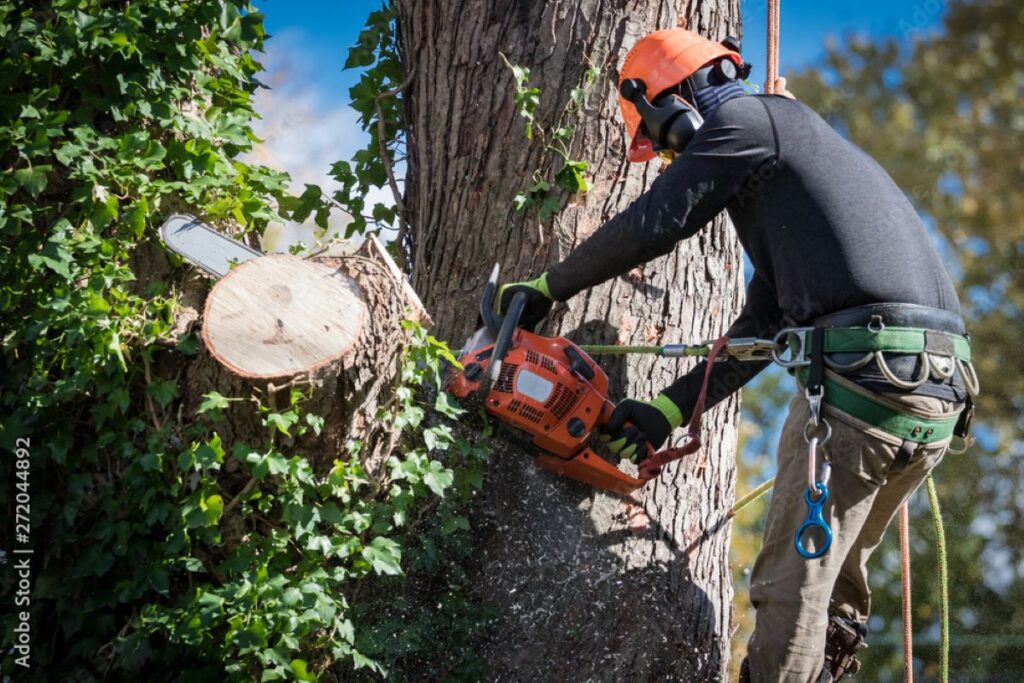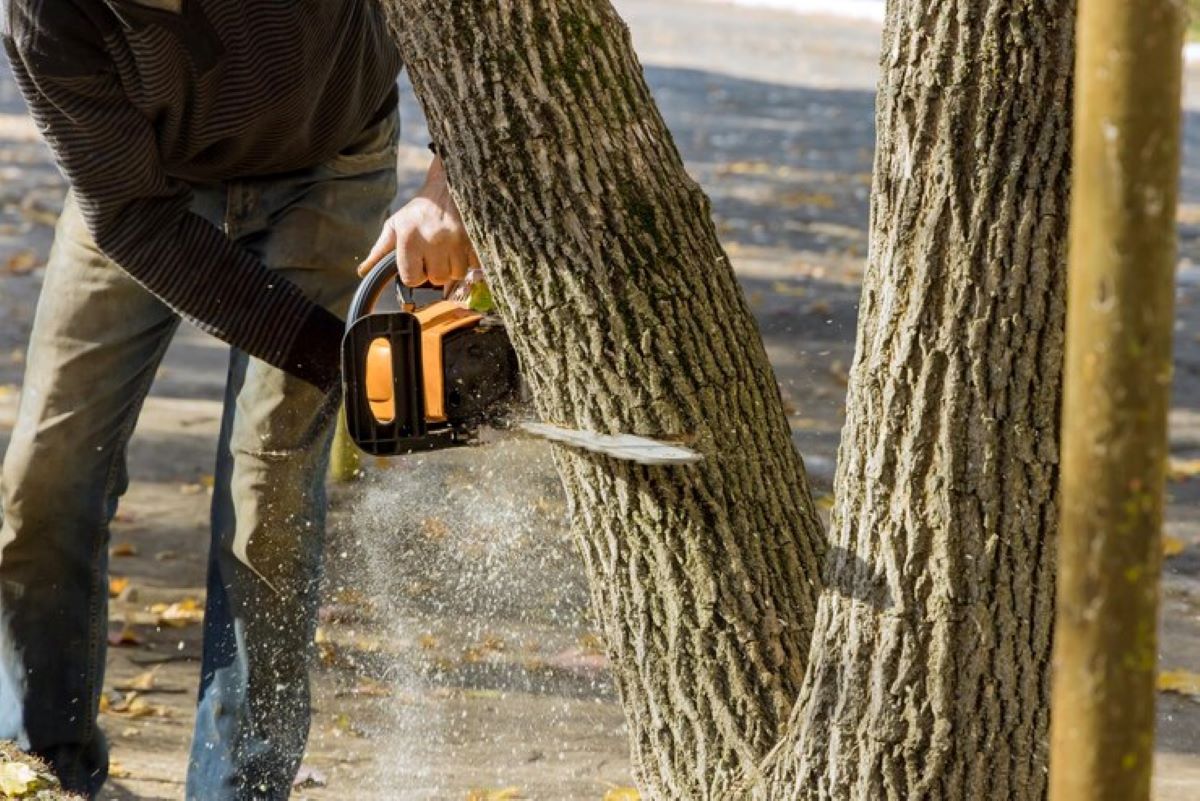What is the Difference Between DIY and Professional Stump Removal?
Tree stump removal presents property owners with two distinct paths: DIY methods or professional services. Each approach carries unique characteristics that can significantly impact the outcome of the project.
DIY Stump Removal
DIY stump removal involves:
- Manual labour using basic tools
- Chemical treatments applied by the homeowner
- Rental of grinding equipment
- Personal time investment
- Lower immediate costs
Professional Stump Removal
Professional stump removal includes:
- Specialised industrial equipment
- Trained operators
- Insurance coverage
- Guaranteed results
- Comprehensive clean-up services
Why Remove Tree Stumps?
Stump removal serves multiple purposes beyond aesthetic improvements. Dead stumps can:
- Attract wood-destroying insects
- Create tripping hazards
- Interfere with landscaping projects
- Take up valuable garden space
- Sprout new growth from remaining roots
Factors Influencing Your Decision
Several factors influence the choice between DIY and professional removal:
- Stump size and age
- Root system complexity
- Soil conditions
- Available time
- Budget constraints
- Local council regulations
- Property access
- Safety requirements
Professional services often prove essential for large stumps or those in challenging locations. DIY methods might suit smaller stumps in accessible areas, provided the property owner possesses the necessary skills and tools.
The decision requires careful evaluation of these factors to ensure safe and effective stump removal near me.
How to Assess Trees for Health and Risk Before Stump Removal?
A comprehensive tree health assessment serves as a critical first step before any stump removal project. This evaluation helps determine the most suitable removal method and identifies potential hazards during the process.
Key Signs of Unhealthy Trees:
- Deep cracks or splits in the trunk
- Large dead or hanging branches
- Mushrooms growing at the base
- Leaning trunk with exposed roots
- Discoloured or falling leaves outside seasonal changes
- Additional signs of a sick tree include stunted growth and unusual insect activity.
Risk Assessment Factors:
- Proximity to buildings or power lines
- Root system spread and depth
- Soil condition and stability
- Previous storm damage
- Disease presence or pest infestation
The tree’s condition directly influences the choice of removal method. Diseased trees might require specialised equipment to prevent contamination spread. Structurally compromised trees need careful handling to avoid unexpected collapses.
Impact on Method Selection:
- Healthy trees with solid wood – Suitable for grinding
- Diseased stumps – Chemical treatment might be preferred
- Decayed stumps – Manual removal could be easier
- Root-diseased trees – Complete root system extraction necessary
A thorough assessment by qualified arborists includes soil testing, root mapping, and structural analysis. These evaluations protect property, ensure worker safety, and guide the selection of appropriate removal techniques.
What Are the Different Methods of Stump Removal?
Stump removal methods vary in complexity, cost, and effectiveness. Each technique offers distinct advantages and challenges for property owners to consider.
1. Stump Grinding
- Professional-grade machines grind stumps into small wood chips
- Reaches 15-30 cm below ground level
- Ideal for larger stumps or multiple removals
- Creates useful mulch as a by-product
- Requires skilled operation and safety equipment
- Higher initial cost but faster completion
2. Manual Removal
- Suitable for smaller stumps (under 30 cm diameter)
- Tools needed: shovel, axe, chainsaw, mattock
- Labour-intensive process involving:
- Digging around the stump
- Cutting visible roots
- Leveraging the stump out
- Cost-effective but time-consuming
- Physical strength and endurance required
3. Chemical Treatment
- Uses potassium nitrate or other stump-killing chemicals
- Process takes 4-6 weeks for complete decomposition
- Steps include:
- Drilling holes in the stump
- Applying chemicals
- Waiting for decomposition
- Low-cost option
- Minimal physical effort required
- Environmental impact considerations
4. Burning Method
- Requires careful preparation and monitoring
- Steps involve:
- Drilling holes in stump
- Adding kerosene or fuel oil
- Controlled burning process
- Local regulations may restrict this method
- Fire safety concerns
- Not suitable near structures or other vegetation
5. Natural Decay
- Least invasive option
- Takes 3-7 years for complete decomposition
- No immediate costs
- Potential habitat for pests
- Occupies usable space during decay period
Each method’s suitability depends on:
- Stump size and location
- Time constraints
- Budget limitations
- Local regulations
- Property layout
- Environmental considerations
Professional stump grinding services typically charge £2-£4 per inch of stump diameter, while DIY chemical treatments cost £15-£30 per stump. Manual removal equipment rental ranges from £50-£100 per day.

Should You Choose DIY or Professional Stump Removal Service?
The cost comparison between DIY and professional stump removal varies significantly based on several factors:
Small Stumps (under 20cm diameter)
- DIY chemical treatment: £10-£20
- DIY manual removal: £30-£50 for tool rental
- Professional service: £80-£150
Medium Stumps (20-50cm diameter)
- DIY grinding rental: £100-£150 per day
- DIY chemical treatment: £20-£40
- Professional service: £150-£300
Large Stumps (over 50cm diameter)
- DIY grinding rental: £150-£200 per day
- Professional service: £300-£600
Hidden costs for DIY removal include:
- Safety equipment
- Multiple tool rentals
- Disposal fees
- Time investment
- Potential property damage
Professional services offer:
- Insurance coverage
- Guaranteed results
- Time efficiency
- Proper disposal
- Expert knowledge
The choice between DIY and professional services depends on:
- Stump size and condition
- Available time and effort
- Technical expertise
- Budget constraints
- Local council regulations
For property owners with small stumps and basic DIY skills, cost-effective DIY methods might suffice. Larger stumps or multiple removals benefit from professional expertise, despite higher upfront costs. Check out more about everything you should know about council green waste pick up days
How to Ensure Safety During Stump Removal Process?
Safety is the most important thing to think about when removing a stump, whether you’re doing it yourself or hiring someone else. There are specific safety measures and equipment that should be used to avoid accidents and injuries during this process.
Essential Safety Equipment:
- Safety goggles to protect eyes from debris
- Steel-toed boots for foot protection
- Heavy-duty work gloves
- Ear protection when using power equipment
- Hard hat to guard against falling debris
- Dust mask or respirator
- High-visibility clothing
Critical Safety Practices:
- Clear the work area of obstacles and debris
- Mark underground utilities before digging
- Keep children and pets away from the work zone
- Maintain stable footing and proper body positioning
- Take regular breaks to prevent fatigue
- Keep tools in good working condition
- Work with a partner when possible
Professional stump removal services have strict safety rules and insurance coverage. Their teams receive regular safety training and use high-quality protective equipment.
DIY removers must be extra careful, especially when using equipment they’re not familiar with. It’s important to get proper instructions and understand how to stay safe when renting stump grinding equipment. Before starting work, users should also learn about emergency shut-off procedures and specific safety features of the equipment.
Weather conditions can also affect safety – wet ground can make it slippery, while dry conditions may require controlling dust. Working in suitable weather conditions can reduce risks and improve efficiency. Additionally, it’s crucial to follow local safety regulations during the stump removal process.
Which Stump Removal Method is Right for You?
The right stump removal method depends on several key factors unique to each situation:
1. Time Constraints
- Chemical treatments require weeks or months
- Grinding can be completed in hours
- Manual removal varies based on stump size

2. Budget Considerations
- DIY chemical treatments: £20-£50
- Stump grinder rental: £100-£200 per day
- Professional services: £150-£500+ per stump
3. Property Specifics
- Small garden: Manual removal or chemical treatment
- Limited access: Hand tools or chemical methods
- Multiple stumps: Professional grinding services
4. Physical Capabilities
- Manual removal demands significant strength
- Chemical application requires minimal physical effort
- Grinding needs technical skill and equipment handling
5. Environmental Impact
- Chemical treatments may affect surrounding soil
- Grinding creates wood chips for mulch
- Manual removal leaves minimal environmental footprint
The choice between DIY and professional services should reflect these factors. Small stumps in accessible areas suit DIY methods for those with time and physical capability. Large stumps or multiple removals often justify professional intervention. Property owners must weigh their resources, abilities, and circumstances to determine the most suitable approach for their specific situation.

